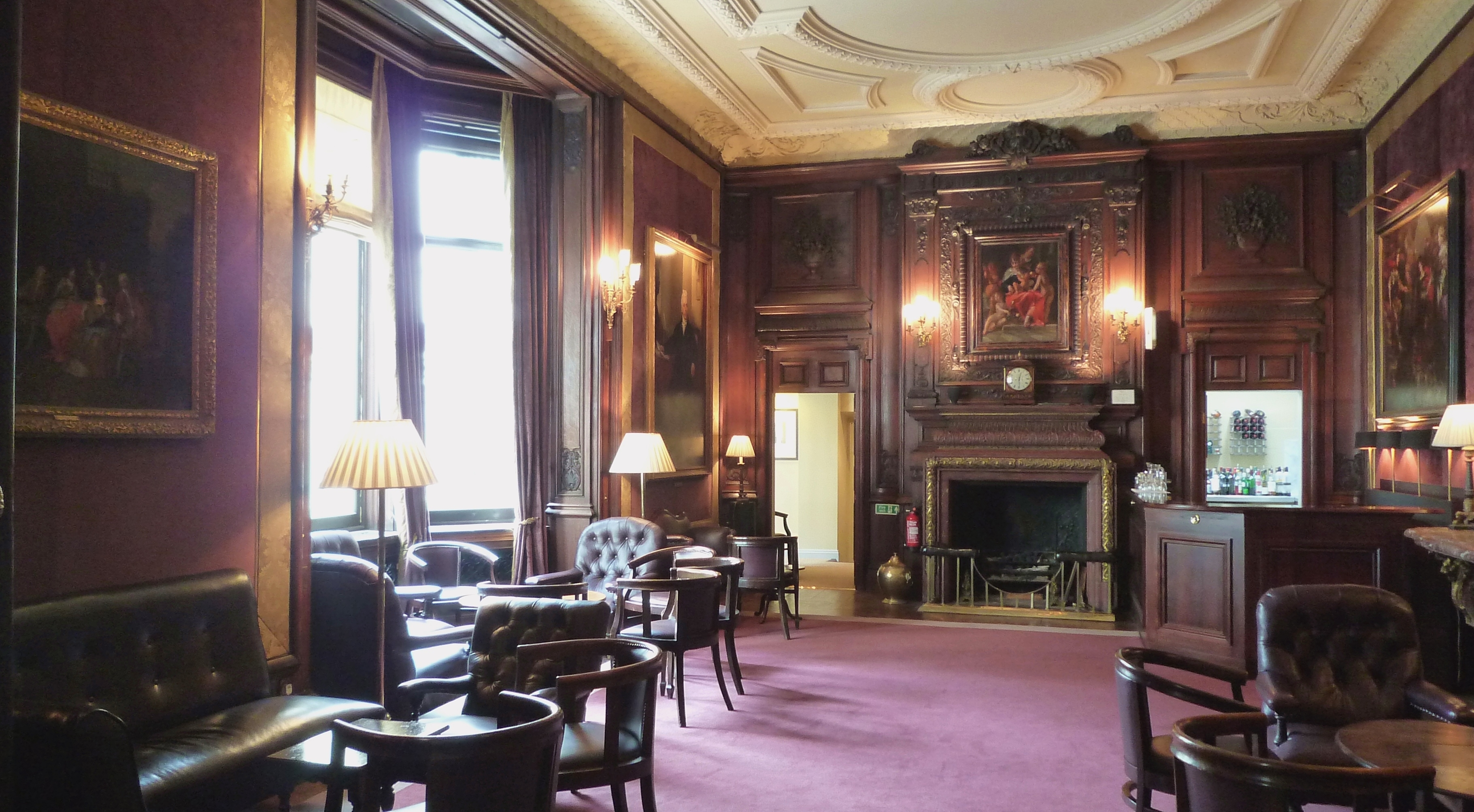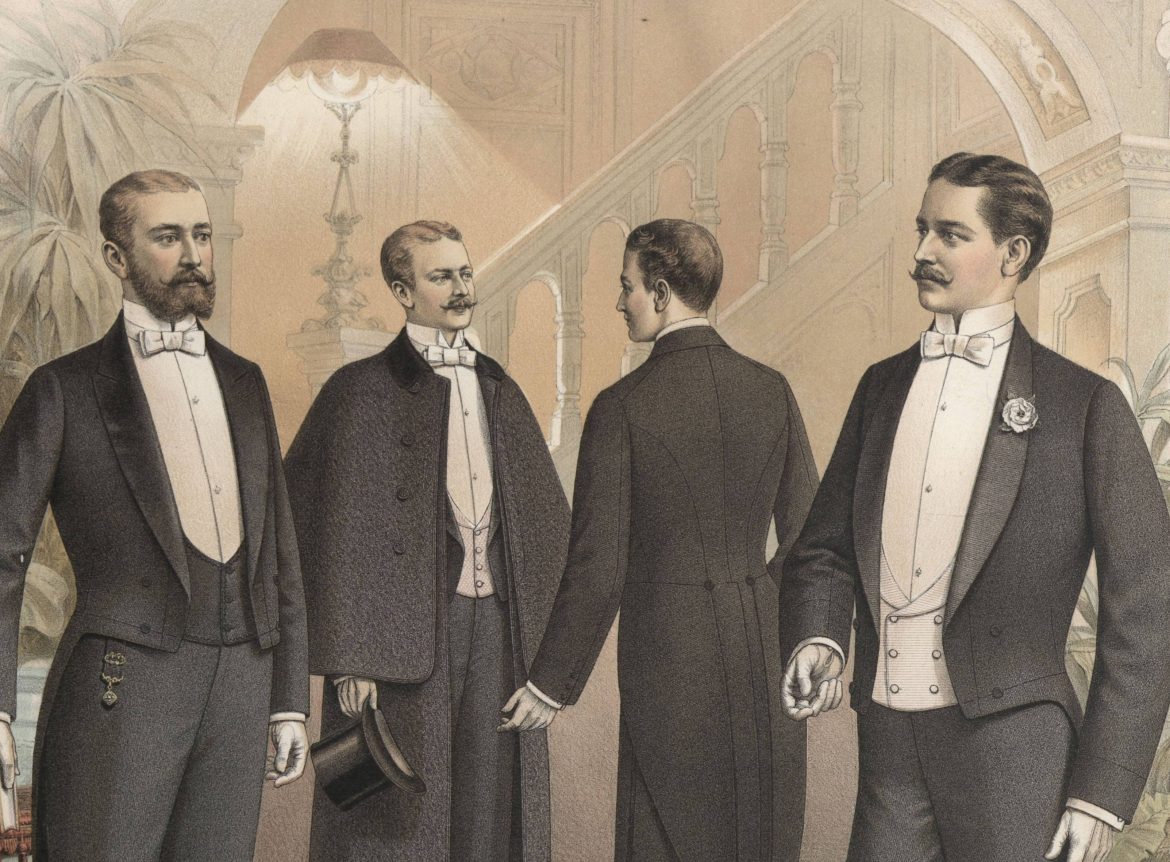Nowadays many think of nightclubs with strippers, when hearing of a gentlemen’s club. Therefore it’s maybe more appropriate to talk about traditional gentlemen’s clubs to avoid misconceptions. A gentlemen’s club in its traditional meaning, is a private social club which typically contains a formal dining room, a library, a bar, a billiards room and rooms for socializing.
In short, it is a place where men could walk away from the everyday stress and requirements in their lives. That is also one of the reasons why so few know about these clubs. On most occasions the members in a gentlemen’s club don’t give interviews or show the spaces in the club, on the ground that this is their second home. In other words, the privacy of the members is one of the most important things for a traditional gentlemen’s club.

The traditional gentlemen’s club was originally set up by and for British upper-class men in the 18th century, and was popularized by English upper middle-class men and women in the late 19th century and early 20th century.
The original clubs were established in the West End of London and some of the clubs took over some parts of the role occupied by coffee houses in 18th-century London. White’s, Brooks’s and Boodle’s were among the first gentlemen’s clubs in the world and provided an environment for gambling, which was illegal outside of members-only establishments. White’s is the oldest gentleman’s club in London, founded in 1693, and is widely considered to be the most exclusive private club in the world.

Although traditional gentlemen’s clubs are no longer as popular or influential as they originally were, many of the rules still apply. Still today membership is by election after the proposers (at least two and in many clubs more), who have known the candidate for a term of years, formally nominate the person for membership.
Below you find a draft from the book Etiquette for Gentlemen from 1929. Under the chapter clubs you find some of the etiquette rules of a traditional gentlemen’s club.
CLUBS
The advantages of clubs are being realized with increasing appreciation every day, for to the business man, the lonely man, or the man who is not comfortably or conveniently settled at home, the club is one of the greatest of boons.
How to Join.
Those who wish to join a club should write to the secretary for the rules and forms of application. If it is a new club, the names of two friends must be given as references, their consent having been asked and granted. If the club be old-established, it is generally necessary to be introduced and seconded by two members who have agreed to act as social sponsors.
Having filled in the application form, the prospective member hands it to his friends, and when they have filled in their names the form should be returned to the secretary, who will bring the matter forward at the next committee meeting and send the intimation of election, when the necessary subscription should be paid by return.
Having been elected, members must make it their business to study the rules and regulations of the club, and rigidly observe them. The man who monopolizes the best chair in the place nearest the fire, and appropriates an undue share of the most up-to-date paper, is never popular. The new member should be ready to give up his chair to an older member or an older man, to co-operate with his fellow-members in their common interests, and to behave as courteously and kindly to them as if they were fellow guests in a friend’s house.
Another pitfall is that of joining in conversation. If a member enters the club drawing-room and finds two or three members conversing he should not immediately join n. If they wish him-to be included, one will address some friendly remark and thus give him the opportunity of joining the little circle.
The successful club member is the man who is invariably [courteous, never obtrudes his own views, and never indulges in gossip or discusses a member as soon as his back IS turned. Speak of a person as you would speak to him is an excellent motto, and its observance will save the unwary from much unpleasantness.
When using the club dressing-rooms, it is well to remember that they should be left as one would wish to find them. Brushes, combs and towels are usually provided m neat array for the use of the members, and should always be left in a tidy condition.
“Neither a borrower nor a lender be” is another useful maxim for club members.
If you play cards or billiards, pay immediately all scores. Should you be appealed to by a member for monetary assistance have courage and refuse! These people are excellent readers of character and hunt their prey with skill and persistence till their nefarious work meets its reward and the club is cleansed of their presence. While careful yourself to uphold by circumspection and good manners the honour of your club, do not be censorious of other members.
Club servants should not be tipped. There is usually a “Holiday Box” on the mantelpiece of the dining-room, or in some other conspicuous place, where members may place their contributions from time to time, the proceeds being equally divided among the servants.










great and thanks for sharing keep sharing such useful information